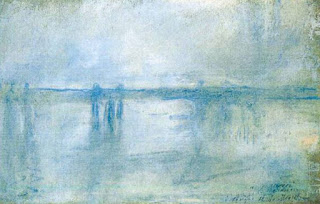Wednesday, October 17, 2012 -  Art Loss Register,art theft,chris marinello,FBI,Kunsthal Rotterdam,Lucien Freud,Matisse,Meyer de Haan,Monet,Pablo Picasso,Paul Gauguin,Port of Rotterdam
Art Loss Register,art theft,chris marinello,FBI,Kunsthal Rotterdam,Lucien Freud,Matisse,Meyer de Haan,Monet,Pablo Picasso,Paul Gauguin,Port of Rotterdam
 No comments
No comments
 Art Loss Register,art theft,chris marinello,FBI,Kunsthal Rotterdam,Lucien Freud,Matisse,Meyer de Haan,Monet,Pablo Picasso,Paul Gauguin,Port of Rotterdam
Art Loss Register,art theft,chris marinello,FBI,Kunsthal Rotterdam,Lucien Freud,Matisse,Meyer de Haan,Monet,Pablo Picasso,Paul Gauguin,Port of Rotterdam
 No comments
No comments
Rotterdam Art Heist: The Day After
by Catherine Sezgin, ARCA Blog Editor-in-Chief
Questions remain the day after seven stolen paintings estimated to be worth "tens of millions" remain missing from the Kunsthal art gallery when yesterday morning the 20-year-old building's "state of the art" security system alerted private security, then the Rotterdam police, that the contemporary art space had been robbed. A Picasso, two Monets, a Gauguin, a Matissee -- five of the paintings were attributed to artists favored by thieves for their fame and perceived value -- plus another by Lucien Freud (famous contemporary artist) and Meijer de Haan (1852-1895), whose name may not be as recognizable but the Dutch artist's paintings are in the Musée d'Orsay in Paris and the Norton Simon Museum in Pasadena (Meyer de Haan painted with Gauguin in Brittany).
Here are links to CBS News (video and text) on the heist and speculation as to whether or not it was an inside job because, as discussed by Chris Marinello of The Art Loss Register, the theft "just went too smoothly". In the later segment, CBS News correspondent John Miller, a former FBI deputy director, describes art thieves not as sophisticated urbanites (see Pierce Brosnan in The Thomas Crown Affair) but "knuckleheads" who put a lot of time into taking the paintings but will either seek assistance in selling the paintings that usually involves undercover agents, or will try to ransom the paintings back to the insurance company, or will keep the paintings for years as a 'get out of jail card'.
The question after an art heist is more overwhelmingly not who took the paintings but when or if they will ever be recovered. Listing the stolen paintings into the database of The Art Loss Register, with the media, and other law enforcement agencies is meant to stop the sale of the works through legitimate art dealers and auction houses.
In Kate Connolly's piece yesterday in The Guardian ("Rotterdam art thieves take valuable paintings in dawn heist"), "security experts speculated that the thieves might have taken advantage of Rotterdam's port -- one of the largest in the world -- to swiftly move the paintings abroad" and that the paintings could have been "stolen to order" or held for ransom.
According to the Associated Press (published online here with the Winnipeg Free Press), Dutch police are following up on "15 tips from the public", "studying video surveillance images", and have "focused their attention on a rear door that thieves most likely used to get into the gallery before snatching the paintings."
Here DutchNews.nl reports that the Kunsthal reopened Wednesday and replaced the spaces formerly occupied by the stolen paintings with works from the Triton Foundation (and notes that journalists outnumbered visitors inside the museum).







